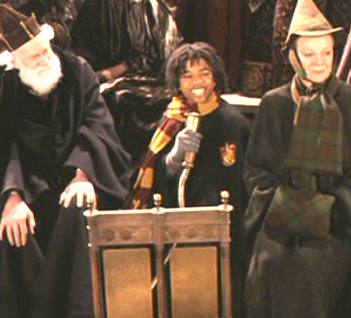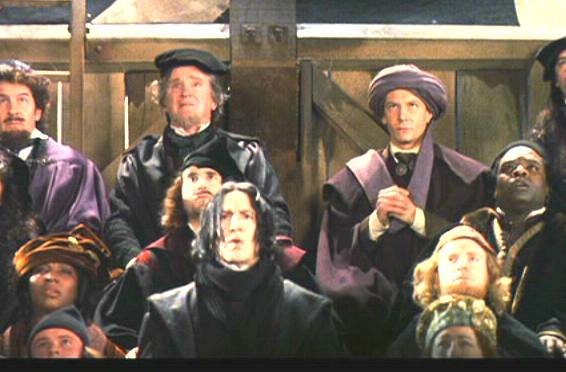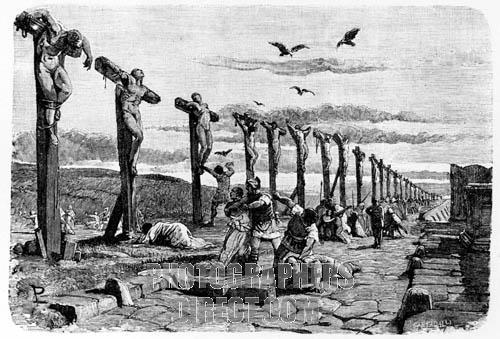“Why so hard!”—said to the diamond one day the charcoal; “are we then not near relatives?”—
Why so soft? O my brethren; thus do I ask you: are ye then not—my brethren?
Why so soft, so submissive and yielding? Why is there so much negation and abnegation in your hearts? Why is there so little fate in your looks?
And if ye will not be fates and inexorable ones, how can ye one day—conquer with me?
And if your hardness will not glance and cut and chip to pieces, how can ye one day—create with me?
For the creators are hard. And blessedness must it seem to you to press your hand upon millenniums as upon wax,—
—Blessedness to write upon the will of millenniums as upon brass,—harder than brass, nobler than brass. Entirely hard is only the noblest.
This new table, O my brethren, put I up over you: Become hard!—
Author: C .T.
This is my response
to J. Varlaan in yesterday’s thread:
Oh man, I must be with you and others like us in the aftermaths of the days of the rope! This is why I believe that white nationalist Christians are obsolete animals. Unlike Pierce, Covington and Linder, white nationalist Christians don’t harbor this sort of fantasies. These nice guys are incapable of indulging themselves in hate because their fucking religion, especially the Protestant branch, forbids them such sentiment.
Seriously man, my big dream is to mark the end the Christian Era that is killing us by exposing, for a hundred years, thousands upon thousands of crucified white traitors along the roads from Paris to Berlin and from Washington to Atlanta. So, speaking of the future, the rotten corpses on the crosses that were killed long ago in the revolutionary days would produce the visual shock that the white race so desperately needs.
That’s why I lean much closer toward Pierce’s seminal novel than to Covington’s quintet. The fanaticism required in the white psyche to survive the darkest hour must go far beyond Dave Duke’s bullshit YouTube propaganda of being fair to non-white peoples and their shitty cultures. Instead of the gospel, the coming overman must find inspiration in Thus spake Zarathustra and in The Turner Diaries.
If conquering the world for the race is the ultimate objective, one must first crucify the most notorious members of wickedest generation of history, and give the strong message to the survivors that Constantine’s abolition of the crucifixion practice in the year 337, out of veneration of a Galilean, is over.
Let the diamond speak!
Hey John,
I am increasingly concerned about the coming currency crash. If I don’t convince my family to allow me sell the real estate at market price, I am screwed. The collapse may happen this year or the next one…
How is life going on in Brazil by the way?
Chechar
Sunday, July 14
Hi Chechar,
Well, things in Brazil are beginning to unravel. I don’t know if you are following the news on the media, but there have been many protests all over the country in the past weeks—as usual, in cases like this organized and instigated by the far Left. The reason for this is that inflation is back and the current communist government (in power for ten years now) is beginning to lose control over it. I think it’s the beginning of the end.
But for the moment, things are still ok despite of these problems. I can’t possibly complain about my material life, except for the fact that, like you, I have to live surrounded by folks who disgust me. The good news is that I’m going to Europe in early February, next year.
John
Sunday, July 14
The big step however will be to manage to move to bucolic England. After the dollar hyperinflates big cities will be unsafe to say the least. It would be ideal to work in a farm or something but yes: the arriving place must be Londri.
Changing subjects, is there anyone in Brazil in jail for saying things racists? Just curious…
Chechar
Sunday, July 14
There must be people being legally prosecuted for racism in Brazil, but I wouldn’t be able to recall any particular cases.
You see, since almost everybody here is brown/black and since the school system and the media have been so successful in indoctrinating the stupid masses about the inexistence of race, the country’s legal anti-racist apparatus sort of becomes obsolete in the face of the voluntary anti-racism of the populace.
I think this is what some commentators call “the São Paulo effect”: when the effects of miscigenation and its attending dysgenic consequences are so deep and pervasive that people don’t need to be thought-patrolled anymore because they have become so stupid that even if they got in touch with undesirable ideas (such as racism) they would be too stupid to digest and process them anyway.
This is a nation of brain-dead half-niggers and mestizos. There’s nothing to be done about it.
John
Sunday, July 14
And I guess that whites are as stupid and racially deracinated as they are here in Mexico?
Chechar
Monday, July 15
If not more so. 🙂
Brazil has a population of around 185 million people, of whom something between 10-15 percent are pure Whites. It means that there are more Whites in Brazil than in the whole of the Scandinavian countries combined. Just think.
But these Whites have long sold out to the current Antifa world order. They want to keep a low profile, get a job and have a good time. That is to say, they’re like the rest of Whites everywhere. Unfortunately, the future of Whites in Brazil is simply to be absorbed by the ocean of non-Whites surrounding them.
Take this guy for example [John adds a Facebook link]. He used to be my best friend when I was a kid. He is not a pure White because he has some Indian blood on his mother side. But to make things infinitely worse, what did he do? He married this niggress [pic in the Facebook page] and has had little half-black children with her. I hadn’t seen the guy in many years until I found him on Facebook, but having seen that he had married this she-monkey, I refused to contact the guy.
But his case is the general rule in Brazil. Most Whites will marry, date or have children with non-Whites and they see no problem with that, which means that this place has literally no future because it is the minority of Whites who keep things running here. As Whites disappear, there will be no elite to fly the plane—and the plane, being flown by apes, will eventually crash, just like it is currently happening in South Africa.
But fortunately, when it happens, I will have been long away from this shithole.
John
Monday July 15
Fascinating. Removing the obvious stuff (your friend’s link, etc) what about publishing these emails in WDH?
Chechar
Monday July 15
That’s fine with me. You know, there’s a saying here: Brazil is the country of the future. In a sinister way, Brazil is the country of the future.
The pervasive miscigenation that is the signature of the country’s social fabric will become the sad lot of every single White country in the West until the end of this century, with predictable consequences.
Non-Whites will absorb Whites in the First World, just like they have done in Brazil. São Paulo once was a European metropolis grafted in South America. Rio de Janeiro once was a European metropolis grafted in South America. Now they’re just sprawling slums teeming with blacks/mestizos surrounding urban areas inhabited by middle-class Whites living in constant fear of being robbed, raped, kidnapped or murdered.
And the same thing will eventually happen to places like Los Angeles, London, Paris and other (still) First World metropolises. They’ll become huge ungovernable slums, just like São Paulo and Rio.
This will be the Brazilian Century. You can call it Brave, Brazilian New World.
John
JVLIAN excerpts – XIII
“Why were you so ungrateful to our gods
as to desert them for the Jews?”
—Julian, addressing the Christians

The malice of a true Christian attempting to destroy an opponent is something unique in the world. No other religion even considered it necessary to destroy others because they did not share the same beliefs. At worst, another man’s belief might inspire amusement or contempt—the Egyptians and their animal gods, for instance. Yet those who worshiped the Bull did not try to murder those who worshiped the Snake, or to convert them by force from Snake to Bull. No evil entered the world quite so vividly or on such a vast scale as Christianity did.
The memoir of Julian Augustus
“Fire? The sun’s? The earth’s?”
Prohaeresius smiled. “Neither. Nor hell’s fire, as the Christians say.”
“As you believe?” I was not certain to what extent he was a Galilean; even now, I don’t know. He has always been evasive. I cannot believe such a fine teacher and Hellenist could be one of them, but anything is possible, as the gods daily demonstrate.
“We are not ready for that dialogue just yet,” he said. He gestured toward the swift shrunken river at our feet. “There, by the way, is where Plato’s Phaidros is set. They had good talk that day, and on this same bank. Why do you call them Galileans?” he asked.
“Because Galilee was where he came from!”
Prohaeresius saw through me. “You fear the word Christian,” he said, “for it suggest that those who call themselves that are indeed followers of a king, a great lord.”
“A mere name cannot affect what they are,” I evaded him. But he was right. The name is a danger to us.
I resumed my argument: most of the civilized world is neither Hellenist nor Galilean, but suspended in between. With good reason, a majority of the people hate the Galileans. Too many innocents have been slaughtered in their mindless doctrinal quarrels. I need only to mention the murder of Bishop George at Alexandria to recall vividly to those who read this the savagery of that religion not only toward its enemies (whom they term “impious”) but also toward its own fallen followers.
Prohaeresius tried to argue with me, but though he is the world’s most eloquent man, I would not listen to him. Also, he was uncharacteristically artless in defense of the Galileans, which made me suspect he was not one of them. Like so many, he is in a limbo between Hellenism and the new death cult. Nor do I think he is merely playing it safe. He is truly puzzled. The old gods do seem to have failed us, and I have always accepted the possibility that they have withdrawn from human affairs, terrible as that is to contemplate. But mind has not failed us. Philosophy has not failed us.
I realized that I was making a speech to a master of eloquence, but I could not stop myself. Dozing students sat up and looked at me curiously, convinced I was mad, for I was waving my arms on great arcs as I am prone to do when passionate. Prohaeresius took it all in good heart.
“Believe what you must,” he said at last.
“But you believe, too! You believe in what I believe. You must or you could not teach as you do.”
“I see it differently. That is all. But try to be practical. The thing has taken hold. The Christians govern the world through Constantius. They have had almost thirty years of wealth and power. They will not surrender easily. You come too late, Julian. Of course if you were Constantine and this were forty years ago and we were pondering these same problems, then I might say to you: ‘Strike! Outlaw them! Rebuild the temples!’ But now is not then. You are not Constantine. They have the world. The best one can hope to do is civilize them. That is why I teach. That is why I can never help you.”
Golden Dawn
I have been watching a few videos on the George Zimmerman verdict and the thought arrived to my mind that Alex Linder is absolutely right: as to organizing in the real world and preparing ourselves for fight, the Greeks are light-years ahead from their American counterparts—both the meta-politicians and the naïve Christian nationalists.
The following is a curiously harmonic collage of paragraphs on the Golden Dawn I stole from Metapedia and its nemesis Wikipedia, which I edited slightly:

Chrysi Avyi (Greek: Χρυσή Αυγή, English: Golden Dawn) is the national liberation movement of the Greek people, strongly opposed to communism, plutocracy and the demographic genocide of the people through third-world invasion. Hrisi Avgi is also the name of a newspaper and a magazine published by that movement. The leader of the party is Nikolaos Michaloliakos.
The party is nationalist and socialistic, evoking Ancient Hellas, and in particular the militant society of Sparta. The movement’s symbol is a white meander in a black coat, also appeared in a red flag bearing pattern with white and golden trim. The party has a more revolutionary character than the likes of the Hellenic Front and the Popular Orthodox Rally.
Golden Dawn has made use of National Socialist (NS) symbolism, and its members have praised figures of NS Germany in the past. It has participated in Hellenic national elections and while they have received thousands of votes, clashes with anarcho-communists plot to destroy the movement.
Ideology
Golden Dawn described itself as a “Popular Nationalist Movement” and “uncompromising Nationalists.” Party leader Michaloliakos described Golden Dawn as opposing the “so-called Enlightenment” and the Industrial Revolution, while supporting National Socialism. According to the party’s charter, “only Aryans in blood and Greeks in descent can be candidate members of Golden Dawn.” The charter also puts the leader in dictatorial control of the party, and formalizes the use of the Roman salute for party members. At first, the party embraced neo-Pagan beliefs, believing them to be intermingled with National Socialism in accordance to NS esotericism, describing Marxism and liberalism as “the ideological carriers of Judeo-Christianity.” Later, however, the party underwent ideological changes, accepting Eastern Orthodox Christianity.
Unlike Americans, the Greeks are on the right track
The party is regularly described as Neo-Nazi by news media and academic sources, and members are allegedly responsible for so-called “anti-Semitic” graffiti.
Ilias Kasidiaris, a spokesman for Golden Dawn, wrote an article that was published in the movement’s magazine on 20 April 2011, in which he said:
What would the future of Europe and the whole modern world be like if World War II (which the democracies, or in fact the Jews—according to general Ioannis Metaxas—declared on Germany) hadn’t stopped the renewing route of National Socialism? Certainly, fundamental values which mainly derive from ancient Greek culture, would be dominant in every state and would define the fate of peoples. Romanticism as a spiritual movement and classicism would prevail against the decadent subculture that corroded the white man. Extreme materialism would have been discarded, giving its place to spiritual exaltation.
In the same article, Adolf Hitler is characterized as a great social reformer and military genius.
In an article published in 1987 in the Golden Dawn magazine titled “Hitler for 1000 years” its editor Michaloliakos showed his support for National Socialism and white interests. He wrote:
We are the faithful soldiers of the National Socialist idea and nothing else … We exist, and continue the battle, the battle for the final victory of our race.
He ends the article by writing:
1987, forty-two years later, with our thought and soul given to the last great battle, with our thought and soul given to the black and red banners, with our thought and soul given to the memory of our great Leader, we raise our right hand up, we salute the Sun and with the courage, that is compelled by our military honor and our National Socialist duty we shout full of passion, faith to the future and our visions: HEIL HITLER!
Furthermore he uses capital letters for pronouns referring to Hitler (“by Himself”, “His people”).
On 17 August 1987, Rudolf Hess, Adolf Hitler’s deputy in the NS Party, who was given a life sentence at the Nuremberg Trials, committed suicide. The following day, on 18 August 1987, Golden Dawn members distributed proclamations in the center of Athens with the phrase “RUDOLF HESS IMMORTAL.”
In pictures taken during the first congress of Golden Dawn in February 1990, the congress hall is decorated with the Swastika and the Wolfsangel.
There are many cases in which Golden Dawn members have appeared to give a NS salute. The founder of the party, Michaloliakos, appeared to give a NS salute in the Athens city council. He claims that it was merely “the salute of the national youth organization of Ioannis Metaxas.” The party states its logo is a traditional Greek meander, not a NS symbol.
In May 2012, Golden Dawn ran in Greek elections under the slogan “So we can rid this land of filth.” On his post-election statement, Michaloliakos had placed a marble eagle on an obvious position on his desk, which according to media reports bears similarity to the eagle of the Third Reich. After the elections, Eleni Zaroulia, a Golden Dawn MP, wore an iron cross ring during her inauguration, a symbol which has been associated with National Socialism. As depicted in a picture taken on 14 September 2012, Panagiotis Iliopoulos, another Golden Dawn MP, has a tattoo reading the greeting “Sieg Heil.”
Ilias Kasidiaris quoted The Protocols of the Elders of Zion in a speech to parliament on 23 October 2012. Defending himself in a discussion on whether to lift his parliamentary immunity over his assault of Kanelli, he quoted Protocol 19: “In order to destroy the prestige of heroism we shall send them for trial in the category of theft, murder and every kind of abominable and filthy crime.”
On 6 June 2013, the Golden Dawn MP Ilias Kasidiaris implied during a stormy debate in the Greek Parliament that he is a Holocaust denier.
Archbishop Ieronymos II of Athens has criticized Golden Dawn, stating that “The church loves all people, whether they are black, white or non-Christians.”
_____________________
My 2 cents:
Judeo-Christianity is the enemy. Both “white nationalists” and “Southern nationalists” who still cling to Christianity are deluded. No puritanical version of Judeo-Christianity in NorthAm, no Hellstorm. No Hellstorm, no anti-white genocide throughout the West in our century. Who do you think will make a difference: the GD fanatics or the American AltRighters who still subscribe the Judaic narrative of defaming Hitler and his movement?
The fourteen words
The History of the Decline and Fall
of the Roman Empire
Chapter XXIII
Reign of Julian
Part III
In the midst of a rocky and barren country, the walls of Jerusalem enclosed the two mountains of Sion and Acra, within an oval figure of about three English miles. Towards the south, the upper town, and the fortress of David, were erected on the lofty ascent of Mount Sion: on the north side, the buildings of the lower town covered the spacious summit of Mount Acra; and a part of the hill, distinguished by the name of Moriah, and levelled by human industry, was crowned with the stately temple of the Jewish nation.
After the final destruction of the temple by the arms of Titus and Hadrian, a ploughshare was drawn over the consecrated ground, as a sign of perpetual interdiction. Sion was deserted; and the vacant space of the lower city was filled with the public and private edifices of the Ælian colony, which spread themselves over the adjacent hill of Calvary. The holy places were polluted with mountains of idolatry; and, either from design or accident, a chapel was dedicated to Venus, on the spot which had been sanctified by the death and resurrection of Christ.
Almost three hundred years after those stupendous events, the profane chapel of Venus was demolished by the order of Constantine; and the removal of the earth and stones revealed the holy sepulchre to the eyes of mankind. A magnificent church was erected on that mystic ground, by the first Christian emperor; and the effects of his pious munificence were extended to every spot which had been consecrated by the footstep of patriarchs, of prophets, and of the Son of God.
The passionate desire of contemplating the original monuments of their redemption attracted to Jerusalem a successive crowd of pilgrims, from the shores of the Atlantic Ocean, and the most distant countries of the East; and their piety was authorized by the example of the empress Helena, who appears to have united the credulity of age with the warm feelings of a recent conversion. Sages and heroes, who have visited the memorable scenes of ancient wisdom or glory, have confessed the inspiration of the genius of the place; and the Christian who knelt before the holy sepulchre, ascribed his lively faith, and his fervent devotion, to the more immediate influence of the Divine Spirit.
The zeal, perhaps the avarice, of the clergy of Jerusalem, cherished and multiplied these beneficial visits. They fixed, by unquestionable tradition, the scene of each memorable event. They exhibited the instruments which had been used in the passion of Christ; the nails and the lance that had pierced his hands, his feet, and his side; the crown of thorns that was planted on his head; the pillar at which he was scourged; and, above all, they showed the cross on which he suffered, and which was dug out of the earth in the reign of those princes, who inserted the symbol of Christianity in the banners of the Roman legions.
Such miracles as seemed necessary to account for its extraordinary preservation, and seasonable discovery, were gradually propagated without opposition. The custody of the true cross, which on Easter Sunday was solemnly exposed to the people, was intrusted to the bishop of Jerusalem; and he alone might gratify the curious devotion of the pilgrims, by the gift of small pieces, which they encased in gold orgems, and carried away in triumph to their respective countries.
But as this gainful branch of commerce must soon have been annihilated, it was found convenient to suppose, that the marvelous wood possessed a secret power of vegetation; and that its substance, though continually diminished, still remained entire and unimpaired. It might perhaps have been expected, that the influence of the place and the belief of a perpetual miracle, should have produced some salutary effects on the morals, as well as on the faith, of the people.
Yet the most respectable of the ecclesiastical writers have been obliged to confess, not only that the streets of Jerusalem were filled with the incessant tumult of business and pleasure, but that every species of vice–adultery, theft, idolatry, poisoning, murder–was familiar to the inhabitants of the holy city. The wealth and preeminence of the church of Jerusalem excited the ambition of Arian, as well as orthodox, candidates; and the virtues of Cyril, who, since his death, has been honored with the title of Saint, were displayed in the exercise, rather than in the acquisition, of his Episcopal dignity. The vain and ambitious mind of Julian might aspire to restore the ancient glory of the temple of Jerusalem.
As the Christians were firmly persuaded that a sentence of everlasting destruction had been pronounced against the whole fabric of the Mosaic law, the Imperial sophist would have converted the success of his undertaking into a specious argument against the faith of prophecy, and the truth of revelation. He was displeased with the spiritual worship of the synagogue; but he approved the institutions of Moses, who had not disdained to adopt many of therites and ceremonies of Egypt.
The local and national deity of the Jews was sincerely adored by a polytheist, who desired only to multiply the number of the gods; and such was the appetite of Julian for bloody sacrifice, that his emulation might be excited by the piety of Solomon, who had offered, at the feast of the dedication, twenty-two thousand oxen, and one hundred and twenty thousand sheep. These considerations might influence his designs; but the prospect of an immediate and important advantage would not suffer the impatient monarch to expect the remote and uncertain event of the Persian war.
He resolved to erect, without delay, on the commanding eminence of Moriah, a stately temple, which might eclipse the splendor of the church of the resurrection on the adjacent hill of Calvary; to establish an order of priests, whose interested zeal would detect the arts, and resist the ambition, of their Christian rivals; and to invite a numerous colony of Jews, whose stern fanaticism would be always prepared to second, and even to anticipate, the hostile measures of the Pagan government. Among the friends of the emperor (if the names of emperor, and of friend, are not incompatible) the first place was assigned, by Julian himself, to the virtuous and learned Alypius.
The humanity of Alypius was tempered by severe justice and manly fortitude; and while he exercised his abilities in the civil administration of Britain, he imitated, in his poetical compositions, the harmony and softness of the odes of Sappho. This minister, to whom Julian communicated, without reserve, his most careless levities, and his most serious counsels, received an extraordinary commission to restore, in its pristine beauty, the temple of Jerusalem; and the diligence of Alypius required and obtained the strenuous support of the governor of Palestine.
At the call of their great deliverer, the Jews, from all the provinces of the empire, assembled on the holy mountain of their fathers; and their insolent triumph alarmed and exasperated the Christian inhabitants of Jerusalem. The desire of rebuilding the temple has in every age been the ruling passion of the children of Isræl. In this propitious moment the men forgot their avarice, and the women their delicacy; spades and pickaxes of silver were provided by the vanity of the rich, and the rubbish was transported in mantles of silk and purple.
Every purse was opened in liberal contributions, every hand claimed a share in the pious labor, and the commands of a great monarch were executed by the enthusiasm of a whole people. Yet, on this occasion, the joint efforts of power and enthusiasm were unsuccessful; and the ground of the Jewish temple, which is now covered by a Mahomet a mosque, still continued to exhibit the same edifying spectacle of ruin and desolation. Perhaps the absence and death of the emperor, and the new maxims of a Christian reign, might explain the interruption of an arduous work, which was attempted only in the last six months of the life of Julian.
But the Christians entertained a natural and pious expectation, that, in this memorable contest, the honor of religion would be vindicated by some signal miracle. An earthquake, a whirlwind, and a fiery eruption, which overturned and scattered the new foundations of the temple, are attested, with some variations, by contemporary and respectable evidence. This public eventis described by Ambrose, bishop of Milan, in an epistle to the emperor Theodosius, which must provoke the severe animadversion of the Jews; by the eloquent Chrysostom, who might appeal to the memory of the elder part of his congregation at Antioch; and by Gregory Nazianzen, who published his account of the miracle before the expiration of the same year.
The last of these writers has boldly declared, that this preternatural event was not disputed by the infidels; and his assertion, strange as it may seem is confirmed by the unexceptionable testimony of Ammianus Marcellinus. The philosophic soldier, who loved the virtues, without adopting the prejudices, of his master, has recorded, in his judicious and candid history of his own times, the extraordinary obstacles which interrupted the restoration of the temple of Jerusalem.
“Whilst Alypius, assisted by the governor of the province, urged, with vigor and diligence, the execution of the work, horrible balls of fire breaking out near the foundations, with frequent and reiterated attacks, rendered the place, from time to time, inaccessible to the scorched and blasted workmen; and the victorious element continuing in this manner obstinately and resolutely bent, as it were, to drive them to a distance, the undertaking was abandoned.”
Such authority should satisfy a believing, and must astonish an incredulous, mind. Yet a philosopher may still require the original evidence of impartial and intelligent spectators. At this important crisis, any singular accident of nature would assume the appearance, and produce the effects of areal prodigy. This glorious deliverance would be speedily improved and magnified by the pious art of the clergy of Jerusalem, and the active credulity of the Christian world and, at the distance of twenty years, a Roman historian, care less of theological disputes, might adorn his work with the specious and splendid miracle.
“Freedom”
From Faith and Action (1938) by Helmut Stellrecht for the Hitler Youth:
There is no freedom in Germany to do whatever one wants, and there will be no such freedom, because otherwise Germany would not exist.
§ Freedom does not mean taking advantage of others, stealing from them, without being punished. Freedom does not mean living as one pleases. Nor does it mean preserving one’s life through cowardice.
§ Freedom is choosing to follow the path that duty requires. The others are slaves of themselves. He is the only free man: upright and proud, master of everything that might demean him, the best of the nation, and the bearer of the state. He has elevated himself. He does his duty while others take a holiday. But his duty raises him above over his little ego and makes him free.
§ Somewhere in the middle of a hot summer, a village’s well dries up. Day and night, someone works hard to dig a new well. No one gave the order. But for him it is a happy duty to find water for women and children and comrades. The other does what he likes. The one is a free man amidst the hard work he has chosen to do. The other is the slave of his desires and passions. He is a rogue who may say in the pub that man is born free and can do whatever he wishes.
§ He who thinks of himself is a slave and bound; he who thinks of others is master and free.
Why I hate Christianity
“What a certificate of mental poverty it was for Christianity that it destroyed the libraries of the ancient world!”
Operation Order Number Five:
“Anyone, man, woman or child
with skin the color of shit
is to be shot on sight.
They had their chance to
leave over the past five years.”
In Harold Covington’s fantasy novels, after the ethnostate was created “the theaters were showing virtually nothing made after 1965 or so,” and a technique was developed to fix a few films made from the late 1960s to the first decades of the 21st century. The technique allowed the film industry to replace black faces with white faces in those famous movies for kids that merited inclusion in the reformed theaters.
I stole the subtitles under the following images from Robert Berry, who analyzes the black student body of Hogwarts Academy in the very first of the Potter films:

This is Lee Jordan. With a good two minutes of screen-time in this movie, he’s the most prominent black character in the film. While some students focus on potions, spells, or the dark arts, Lee is apparently attending Hogwarts on a sports scholarship.
Next we have an unnamed boy whose function at the school is almost limited to giving funny looks when someone says something startling. As the closed caption excerpt shows, he at least gets a line of dialogue, which makes him the only other black character in the movie that does.
This mysterious Gryffindor Quidditch player has a few cool action scenes, and scores some points for her team, but doesn’t contribute much else after she’s knocked unconscious from her broom. Though not named in the film, the books identify her as Angelina Jordan.

The rest of the roles are merely extras. Here we have the same unnamed boy mentioned above, with two girls among the first year inductees.

And at the Hufflepuff table, if you blink, you’ll miss this
black chap talking with his buddies, near the movie’s end.

Here there are three more during a slightly chaotic
scene in the banquet hall.

And here’s a girl just waiting in the hallway,
staring at Harry mysteriously as they walk by.

The gent on the right looks like
Gary Coleman’s pal “Dudley” from Strokes!

Here’s the only appearance from this lighter skinned black
student during the “Sorting Hat” sequence at the film’s start.

And when it appeared that all the black students were a part of the Gryffindor group, a quick eye can catch two Slytherin students during the big Quidditch match.

And here’s another, but she seems to be the least enthusiastic of the bunch. Kind of hard to be too excited, I imagine, when the leader of the Aryan Nation, Draco Malfoy (the blond at the center: the bad kid of the film), is the most dominant student in the class.

Two girls that you’ll never see again in the film.

A boy who appears for this split second during the mail delivery
scene as a member of Gryffindor, only to never show up again, either.

There are a few black adults in the faculty as well. Here’s a gender neutral wizard to the right of Dumbledore in a rare shot in which candles aren’t hovering in front of her/his face.

And seated next to Professor Snape are two other black
faculty members. We never see them again, either.
The above pics come, as already said, from the first Potter film. But in that very film outside Hogwarts I remember an adult black face in the Leaky Cauldron pub, and another face with skin the color of shit in Diagon Alley.
When the producers of the series changed directors after the second Potter film, the inclusion of niglets and black adult wizards became even more apparent. The sixth film, when the characters reach full-blown adolescence, was the most offensive: a beautiful teen English rose, Ginny Weasley, one of the main characters of the series, is engaged with a black student and even kisses him passionately on the mouth.
But the perpetrator here was none other than the author herself, J. K. Rowling. Indeed, compared to Rowling’s book, in the movie comparatively little of Ginny’s relationship with the young negro is depicted.






